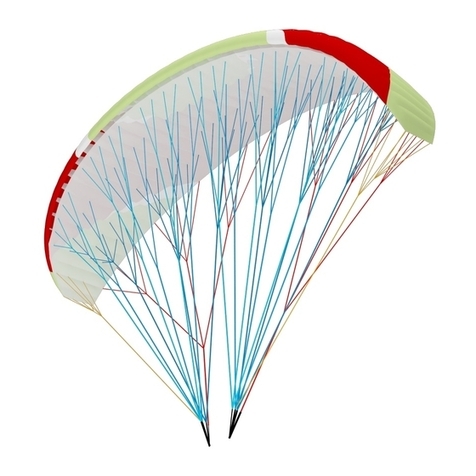
Technical data
The total weight in ight is equal to the weight of the pilot and all the equipment including the wing.
Usually - pilot weight + 15...17 kg.
Top surface: Gelvenor LCN 0066 OLKS
Bottom surface: Skytex 9017 E38A
Ribs: Skytex 9017 E29A
Leading edge reinforcements: Double laminated mylar
Lines reinforcements: Dacron 170 g/sqm
Top level lines: Cousin Dyneema 130 kg
Bottom level lines: Liros Aramid 220, 280 kg
Risers: polyester webbing 20mm, 1000 kg
Connectors: 3 mm stainless
Materials
size 23 25 27 29 31 33
scale 0,923 0,962 1,00 1,036 1,072 1,105
wing area, sq.m. 22,95 24,93 26,94 28,91 30,95 32,89
span, m. 11,04 11,5 11,96 12,39 12,82 13,21
aspect ratio 5,31
projected area,
sq.m.
19,84 21,55 23,79 25,0 26,76 28,44
projected span, m. 8,73 9,10 9,46 9,8 10,14 10,45
projected aspect
ratio
3,84 3,84 3,84 3,84 3,84 3,84
root chord, m. 2,62 2,735 2,843 2,945 3,04 3,14
tip chord, m. 0,46 0,48 0,50 0,52 0,54 0,55
number of cells 53
Vmin, km/h 24
Vmax, km/h 52
total ying
weight, kg
60-80 70-90 80-100 90-115 105-130 120-145


































